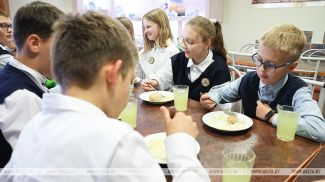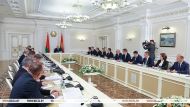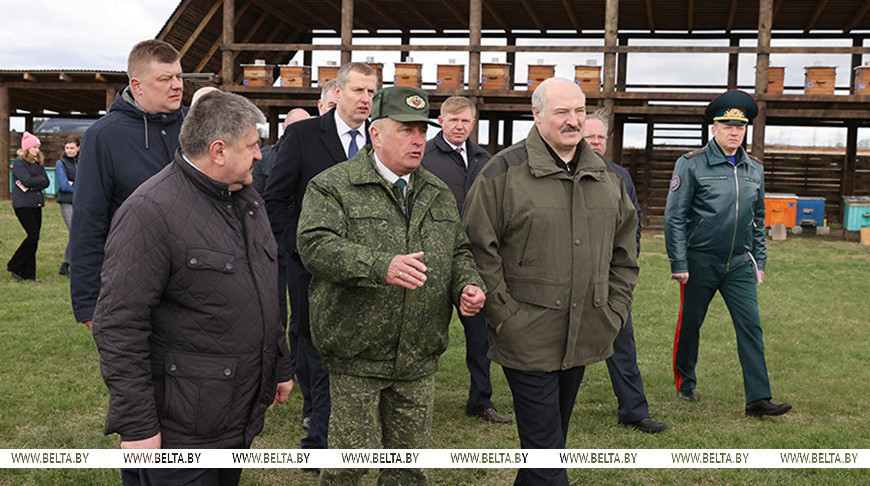
News of the story
"After the Fact: Lukashenko’s Decisions"
Following the Chernobyl accident Belarus inherited a huge territory of contaminated land, resettled villages, broken destinies of people. Aleksandr Lukashenko has regularly visited Gomel Oblast both in the first years of his presidency and later on. The president pays special attention to the Polesie State Radiation and Ecology Reserve. In this episode we will tell you how the radiation situation is monitored. What horses are bred in the reserve and why beekeepers need “curlers”.
How did the Polesie State Radiation and Ecology Reserve come into being?
The Polesie State Radiation and Ecology Reserve was set up in 1988, two years after the Chernobyl disaster. It is located in the Belarusian part of the exclusion zone spanning three districts of Gomel Oblast that suffered the worst from the accident: Bragin, Narovlya and Khoiniki.
“Back then, when I came here in the second year of my presidency, people were scared. A lot of people used it to make politics. They are living abroad today (here they lived off foreign grants). They moved away while people stayed,” the president said as he was visiting the Polesie State Radiation and Ecology Reserve in June 2017.

“A lot has changed over these 20 years. People live here like in the rest of Belarus. The Belarusian people have accomplished a lot and this is the greatest joy for me. This is one of the most significant results of our joint work during that period of my presidency. We have not just preserved these territories. We have brought them back to life. This is the main result,” Aleksandr Lukashenko said.
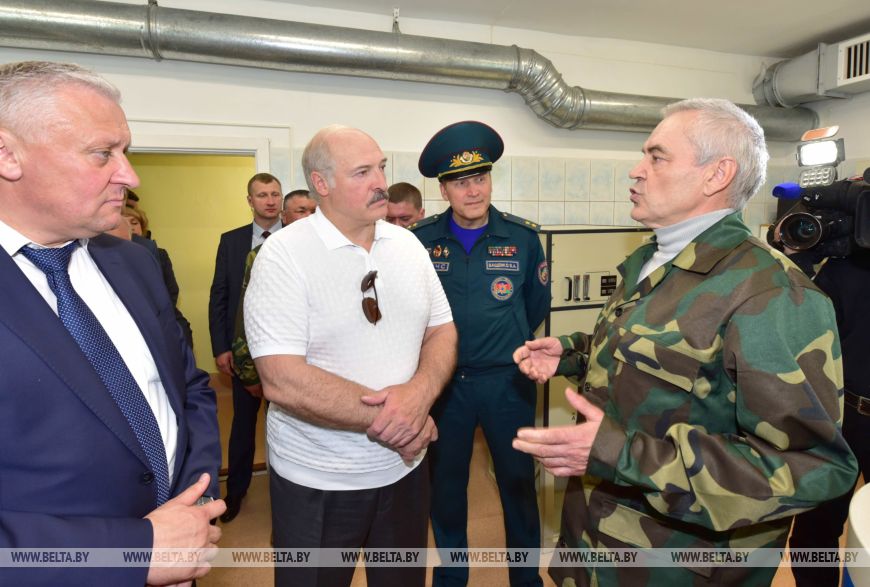
On the instructions of the president, an experimental base has been created in the reserve. It incorporates a cattle farm, an experimental fruit orchard, bee apiaries, tree nurseries and woodworking shops.
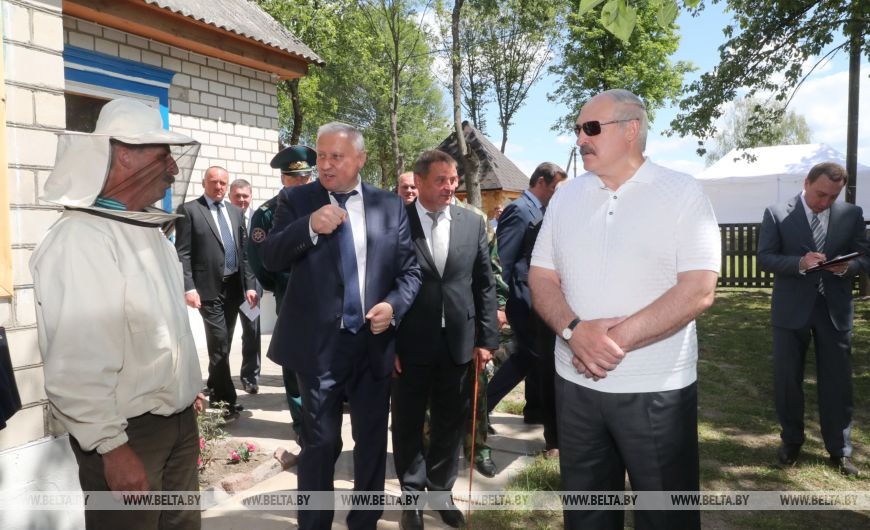
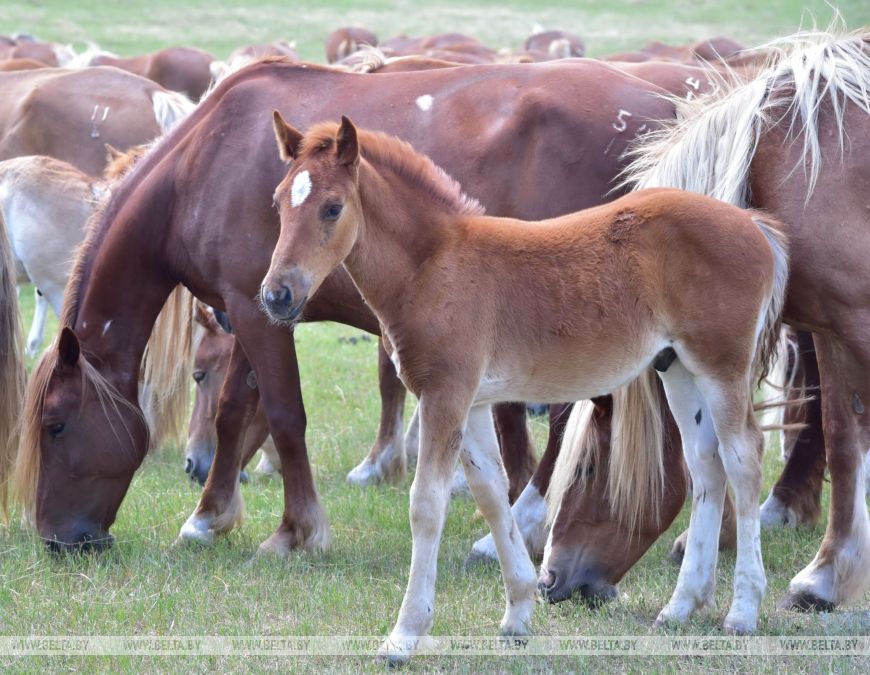
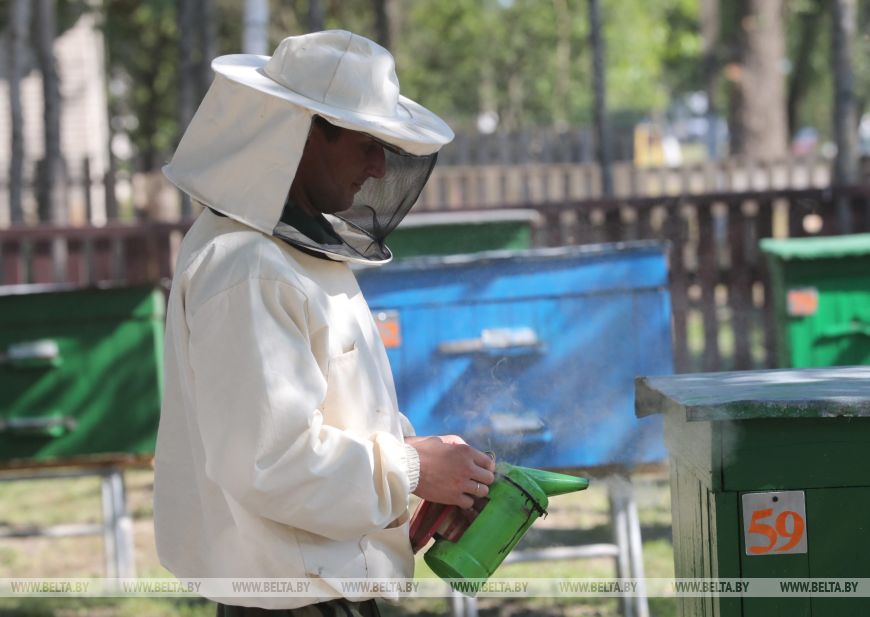
There are three woodworking shops in the reserve. Our film crew visited the one in Khoiniki. Nikolai Medvedev has been working here since 1997. According to him, the production has changed a lot over time. At first, the shop processed wood for its own needs. Then it started selling surpluses.
“It was not professional processing back then. We were very amateurish. We started out with 30 cubic meters. Then we slowly built up and increased the output. Today we process about 700 cubic meters per month. The main buyer is Russia. We send about 8-9 trucks a month to Russia. This is about thirty cubic meters,” said Nikolai Medvedev, foreman of the wood processing shop at the Polesie State Radiation and Ecology Reserve.
The number of jobs in the shop has been increased. Now there are 24 people on the staff. Half of them were hired last year. The shop processes mostly pine wood. It produces cut and uncut lumber.
“At first we had only a frame sawmill. Then we acquired a disk sawmill, which grew worn-out and obsolete with time. We bought a band mill. Last year we started expanding and installed another mill. Output has increased,” he said.
Nikolai Medvedev is a local resident. He was 19 years old when the Chernobyl accident happened. He served in the army. That's where he learned about the tragedy.
“We tried to settle down in another place. We moved to Russia, but then came back. There is no place like home. At first we tried to avoid eating what was grown. We ate only non-local products. We were away from home for only two years but when I came back, I could not recognize local stores, I felt like I was abroad. The assortment was huge compared to where we were,” Nikolai Medvedev recalled.

How is radiation monitored in the reserve?
All products manufactured in the reserve undergo strict control. Wood is no exception. Both raw materials and finished products are checked.
“We have an accredited spectrometry and radiochemistry laboratory that studies samples of forest products, measures the specific activity of cesium and issues sales permits. People go to a certain logging area, take samples from model trees and measure them on a spectrometer. If the cesium content requirements are met, these wood products are cleared for export. If the cesium content in a certain logging area is high, the products cannot be exported,” said Nikolai Demenkovets, Head of the Radiation Safety and Regime Department of the Polesie State Radiation and Ecology Reserve.
On 26 April 2001, Aleksandr Lukashenko visited the areas affected by the Chernobyl accident. The president spoke with the staff of the radiology monitoring station.
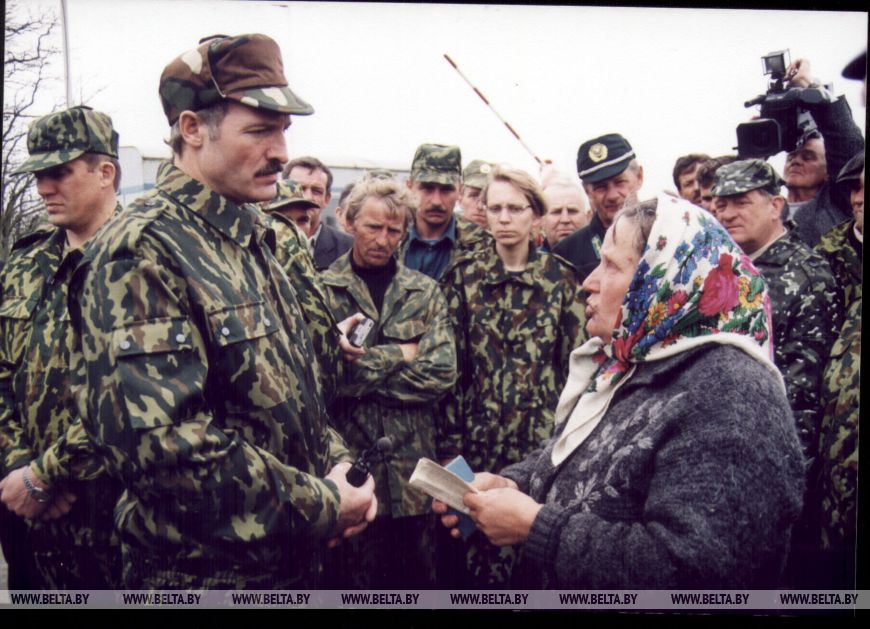
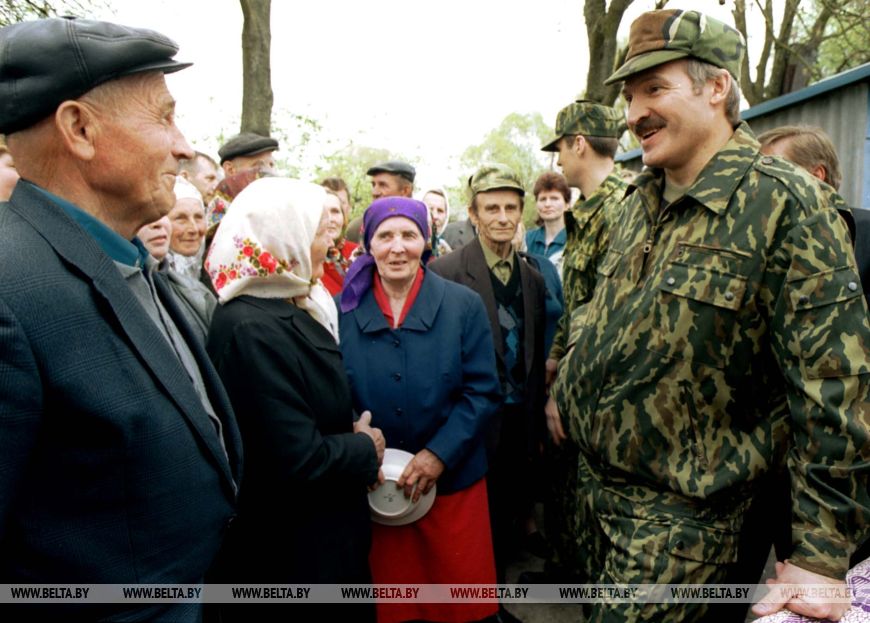
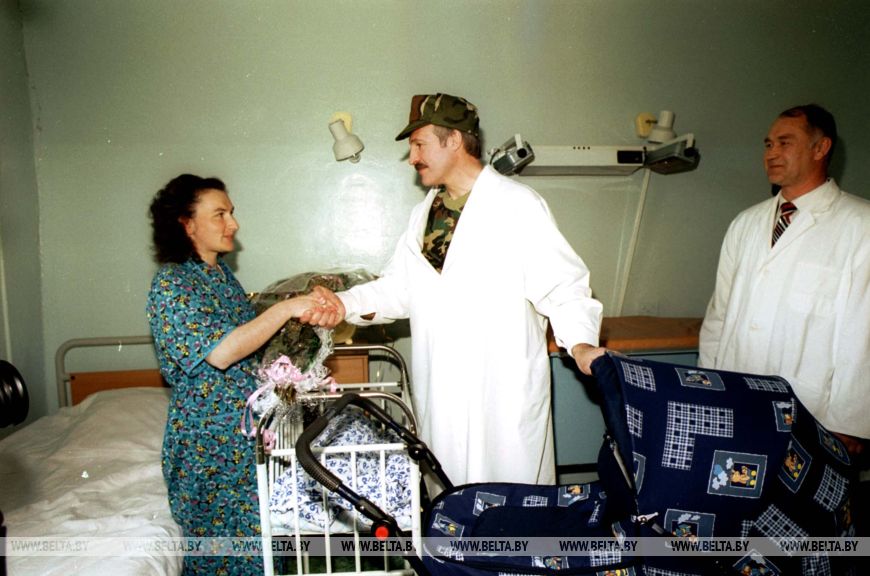
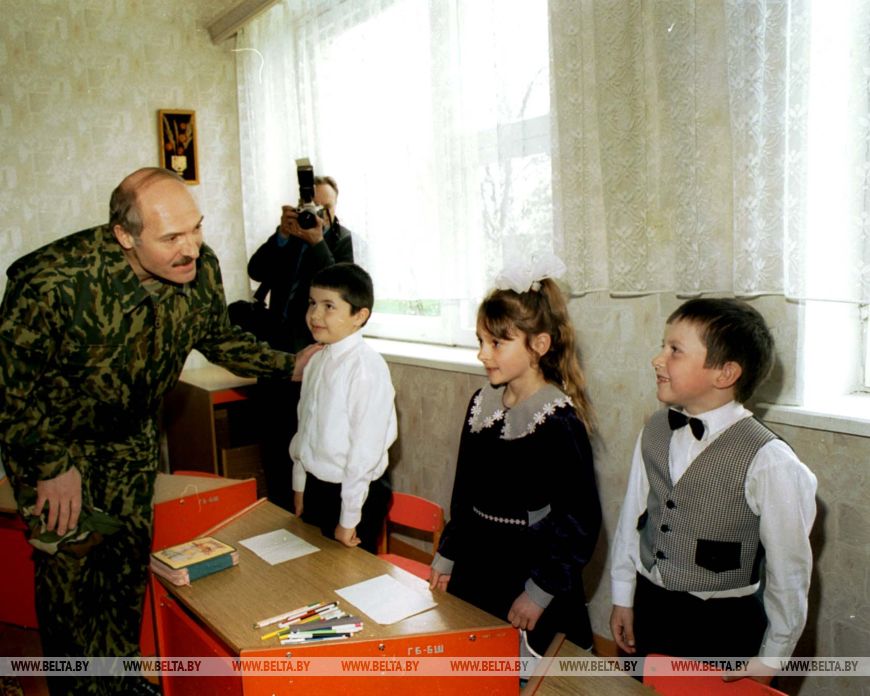
The dose of internal radiation is monitored on a special device called a spectrometer. It determines the amount of radionuclides in a human body.
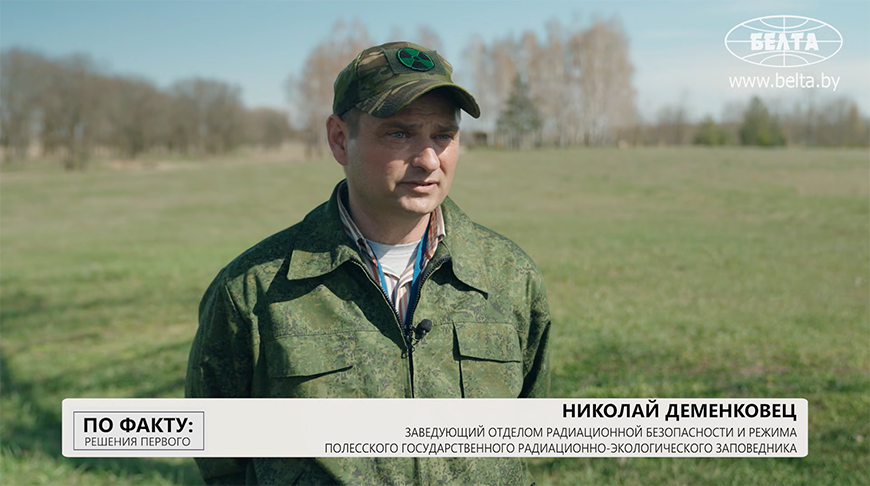







How did the Polesie State Radiation and Ecology Reserve come into being?
The Polesie State Radiation and Ecology Reserve was set up in 1988, two years after the Chernobyl disaster. It is located in the Belarusian part of the exclusion zone spanning three districts of Gomel Oblast that suffered the worst from the accident: Bragin, Narovlya and Khoiniki.
“Back then, when I came here in the second year of my presidency, people were scared. A lot of people used it to make politics. They are living abroad today (here they lived off foreign grants). They moved away while people stayed,” the president said as he was visiting the Polesie State Radiation and Ecology Reserve in June 2017.

“A lot has changed over these 20 years. People live here like in the rest of Belarus. The Belarusian people have accomplished a lot and this is the greatest joy for me. This is one of the most significant results of our joint work during that period of my presidency. We have not just preserved these territories. We have brought them back to life. This is the main result,” Aleksandr Lukashenko said.

On the instructions of the president, an experimental base has been created in the reserve. It incorporates a cattle farm, an experimental fruit orchard, bee apiaries, tree nurseries and woodworking shops.



How has timber production in the reserve changed?
There are three woodworking shops in the reserve. Our film crew visited the one in Khoiniki. Nikolai Medvedev has been working here since 1997. According to him, the production has changed a lot over time. At first, the shop processed wood for its own needs. Then it started selling surpluses.
“It was not professional processing back then. We were very amateurish. We started out with 30 cubic meters. Then we slowly built up and increased the output. Today we process about 700 cubic meters per month. The main buyer is Russia. We send about 8-9 trucks a month to Russia. This is about thirty cubic meters,” said Nikolai Medvedev, foreman of the wood processing shop at the Polesie State Radiation and Ecology Reserve.
The number of jobs in the shop has been increased. Now there are 24 people on the staff. Half of them were hired last year. The shop processes mostly pine wood. It produces cut and uncut lumber.
“At first we had only a frame sawmill. Then we acquired a disk sawmill, which grew worn-out and obsolete with time. We bought a band mill. Last year we started expanding and installed another mill. Output has increased,” he said.
Nikolai Medvedev is a local resident. He was 19 years old when the Chernobyl accident happened. He served in the army. That's where he learned about the tragedy.
“We tried to settle down in another place. We moved to Russia, but then came back. There is no place like home. At first we tried to avoid eating what was grown. We ate only non-local products. We were away from home for only two years but when I came back, I could not recognize local stores, I felt like I was abroad. The assortment was huge compared to where we were,” Nikolai Medvedev recalled.

How is radiation monitored in the reserve?
All products manufactured in the reserve undergo strict control. Wood is no exception. Both raw materials and finished products are checked.
“We have an accredited spectrometry and radiochemistry laboratory that studies samples of forest products, measures the specific activity of cesium and issues sales permits. People go to a certain logging area, take samples from model trees and measure them on a spectrometer. If the cesium content requirements are met, these wood products are cleared for export. If the cesium content in a certain logging area is high, the products cannot be exported,” said Nikolai Demenkovets, Head of the Radiation Safety and Regime Department of the Polesie State Radiation and Ecology Reserve.
On 26 April 2001, Aleksandr Lukashenko visited the areas affected by the Chernobyl accident. The president spoke with the staff of the radiology monitoring station.




“Each employee is provided with dosimeters-accumulators to monitor external radiation. The accumulated dose is measured quarterly. The radiation safety department makes sure that the radiation limit for personnel established by the Healthcare Ministry is not exceeded. The threshold is set at 5 millisieverts. Last year, the preliminary survey of the territory showed that radiation safety employees had the radiation dose of 2.32 millisieverts,” Nikolai Demenkovets said.
The dose of internal radiation is monitored on a special device called a spectrometer. It determines the amount of radionuclides in a human body.
“We have such a spectrometer in our department. The personnel of the Khoiniki site undergo an examination on the spectrometer in Babchino. The personnel of the Narovlya and Bragin sites do this during routine medical check-ups,” Nikolai Demenkovets said.

A distinctive feature of the reserve is that its precipitation map looks like a mosaic. The soil accumulates the larger part of radionuclides. While leaving the area, vehicles undergo special contamination control. If the contamination level is exceeded, they are sent to a car wash. Clothes are washed at sanitary treatment points.
“We have reference points at each site to monitor the radiation level. We measure the radiation dose every day. We monitor it. At this point in Babchin, the gamma radiation dose is 0.42 microsieverts per hour. Although this point is on the outer perimeter of the reserve, this dose is twice as much as the acceptable level for Belarus,” Nikolai Demenkovets added.
The closer the epicenter of the accident is, the higher the radiation levels are. Scientists are studying the environmental situation on the site.
How much honey is harvested at the Polesie State Radiation and Ecology Reserve?
The reserve is also engaged in beekeeping. One of the first apiaries was set up in 1991. They started with five bee-families. There is an interesting beehive at the entrance to the apiary. It is a gift from the president. Places for beekeeping were chosen carefully as the surrounding grounds need to be safe.
Forester at the reserve Sergei Krasovsky remarked that a distance of 3km is an economically profitable activity in beekeeping: everything over 3km is not profitable. In this case a bee will bring half of what it should. The reserve has different varieties of honey harvested from linden, acacia, phacelia, sweet clovers and buckwheat.
Last year one bee family from this apiary produced 26 kilos of honey. Experts say that it is necessary to listen to the bee. It will tell you how and what to do.
Last year honey from the reserve was sold in Minsk. The news made headlines on the internet. Some people were concerned whether the product from the contaminated area was safe. Others rushed to buy the product.
“We invite a veterinary laboratory that takes samples, runs tests. Only when it gives its conclusion on the safety of the product, can we take the product and sell it. This means that if we see the product, it is safe to use,” Sergei Krasovsky said.

Aleksandr Lukashenko visited the apiary in April 2021. The head of state expressed confidence that this area could be further developed, as there is significant untapped potential. At the end of his visit, the president sampled the local honey.




What else is done at the reserve's apiary?
The reserve not only produces honey, but also breeds queen bees. Only pedigree ones are purchased. They are characterized by their docility, egg-laying ability, and high honey production.
“The apiary was established in 2019. It was designed as a queen-rearing facility specifically to supply our own apiaries with more productive queens. We currently have 37 bee colonies. Last year, each colony produced 35 kilograms of honey,” forester at the Polesie State Radiation and Ecology Reserve Gennady Danchenko said.

Queen bee rearing is a labor-intensive and time-consuming process. It requires special skills and attention.
“This is our grafting frame, where larvae are transferred. We need a frame of the specific colony we want to transfer larvae from. The frame with the grafted larvae is placed in the nurse colony. The bees then build queen cells where new queens are born. After 11 days, we put caps on the cells (commonly referred to as “curlers”) to prevent the first emerging queen from destroying future competitor queens, as it tends to happen. Then we check the queen’s egg-laying capacity. If the queen lays eggs and brood appears, the queen is deemed fertile,” Gennady Danchenko explained.
Why did Lukashenko instruct the reserve to engage in horse breeding?
During the same visit in April 2021, Aleksandr Lukashenko toured the horse farm in the Polesie Radiation and Ecology Reserve, where he learned about the organization of work related to breeding and raising pedigree horses. The head of state was assured that this is a promising direction for the region, though there are certain nuances. Specifically, it was necessary to further study the possibilities for expanding the feed base.
The reserve began to breed horses in 1996, following the instruction of the president. Initially, the reserve purchased 60 horses of different breeds. Now, only Russian heavy draft horses are bred here.
“This is the smallest of the heavy draft breeds. It is hardy, ideal for village life. It requires minimal feed and can carry out diverse tasks. Its hooves are small, and it doesn’t demand much care, making it a practical choice. So we made the decision to focus only on this breed,” said Yelena Boldyreva, leading animal technician of the Polesie State Radiation and Ecology Reserve.

There are only three stud farms in Belarus breeding this specific horse breed. Currently, the reserve has 450 horses. It sells over 80 horses every year.
“The most important things are care, maintenance, feeding, and love for the horses. In summer, they should spend more time on pastures, grazing on grass. In winter, they need plenty of hay, a bit of oats, and the horse can endure everything,” Yelena Boldyreva believes.
Next year will mark 40 years since the Chernobyl disaster. Decades ago, these lands seemed lifeless. Over the time, it has become evident that with the right approach these lands can and should be revived. The president insists on developing the Polesie State Radiation and Ecology Reserve.









